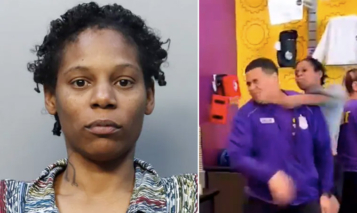
The Minnesota Freedom Fund revealed it used only $200,000 out of $35 million in donations to bail out protesters during the civil unrest following the murder of George Floyd.
The unrest has resulted in millions of dollars in donations to help those arrested. But many say they have not seen an accounting of the money from any bail fund organization.
The MFF is a small, volunteer community fund based in Minneapolis — the city where Floyd was killed by a former Minneapolis cop.
In the last few weeks, the MFF has been hashtagged in posts on Instagram and Twitter, asking for donations to bail out protesters.
But in the last week, donors — particularly major corporations — have been asking for an accounting of where the money went — since many of those arrested are still sitting in jails.
One Twitter user, Evelyn Woodsen, founder of The Affinity Mag, tweeted, “Wait till Twitter wakes up tomorrow and finds out the Minnesota Bail Fund got $35 million and only used $200k to bail out protestors.”
After calls for transparency and accountability, the MFF finally acknowledged it was overwhelmed with donations and struggling to figure out what to do with the money.
“We are a volunteer community fund who until last month was doing all we could to pay a handful of misdemeanors each month, steadily paying, getting funds back, raising more $ when we could, doing it again,” they wrote.
They removed their “donate” button and tried to redirect funds to other organizations with bail-out initiatives. But donations kept pouring in.
A lawyer contacted by Refinery29 explained the organization’s dilemma:
“We were a small organization that was not ready for this kind of influx and so we’re working as quickly as possible while being mindful that we have to take slow, necessary steps and have conversations with the group about hiring an accountant and attorney who can help us go through these processes,” Mirella Ceja-Orozco, the Immigration Attorney Volunteer on the Board of Minnesota Freedom Fund, told Refinery29. “Before, we were an organization that had two staff members and maybe 8 volunteers and that’s completely changing now.”





